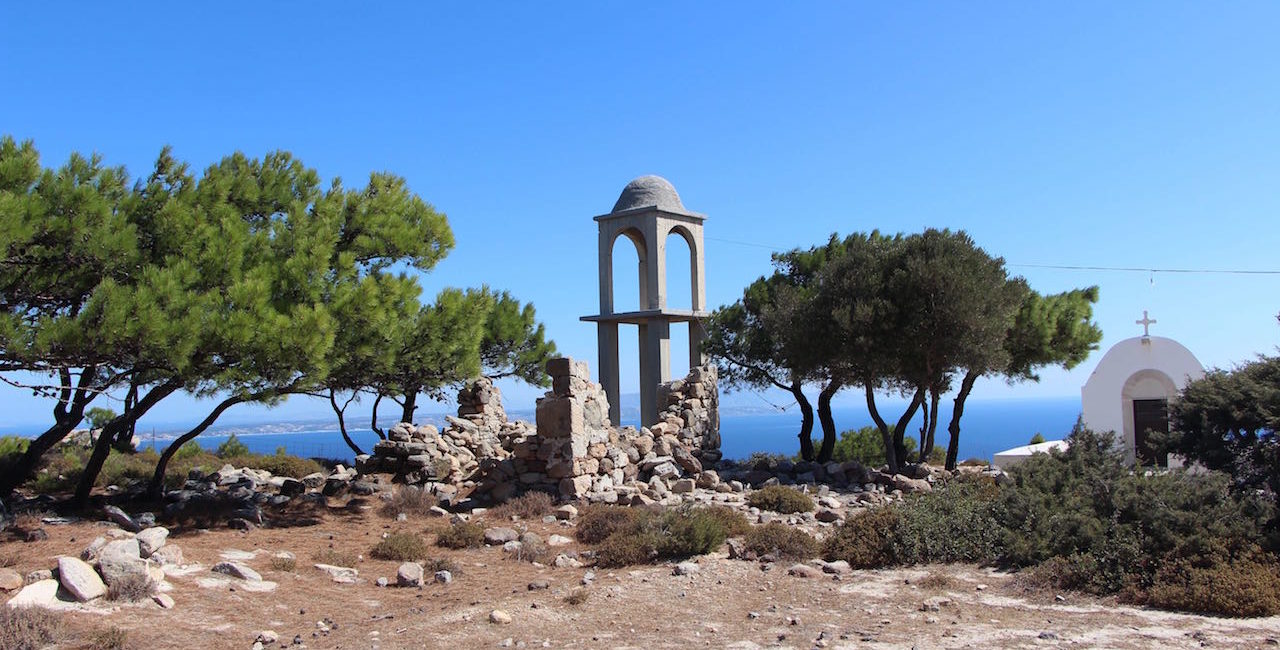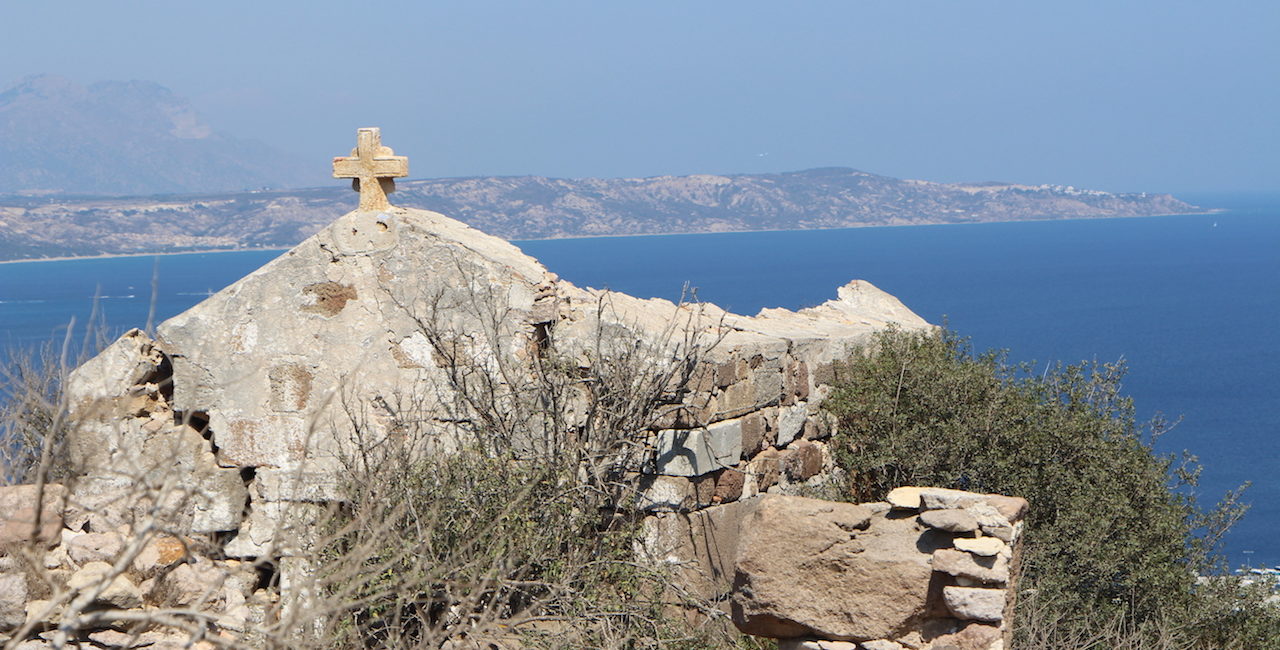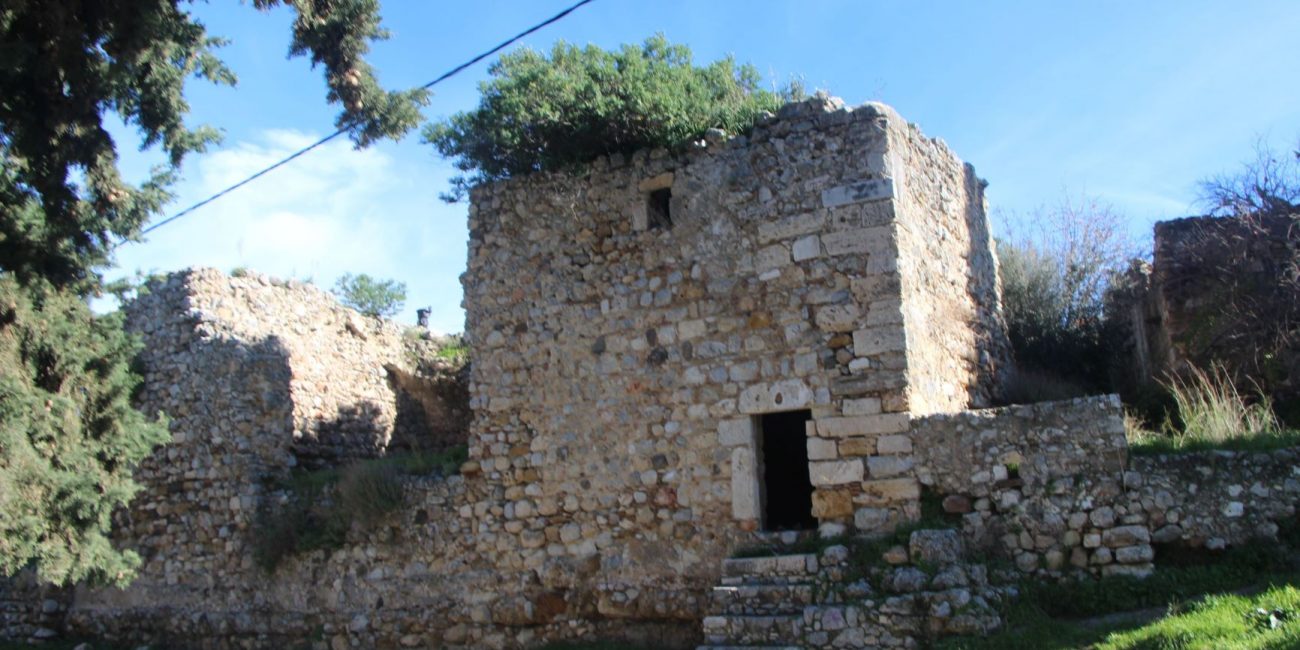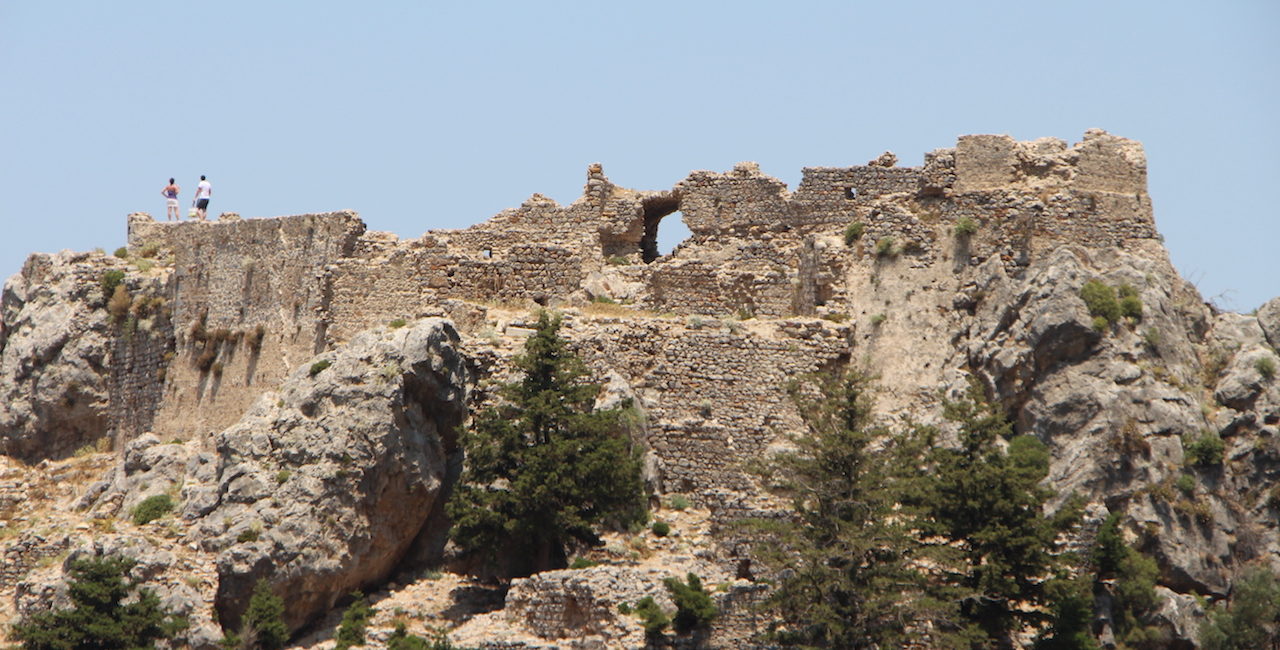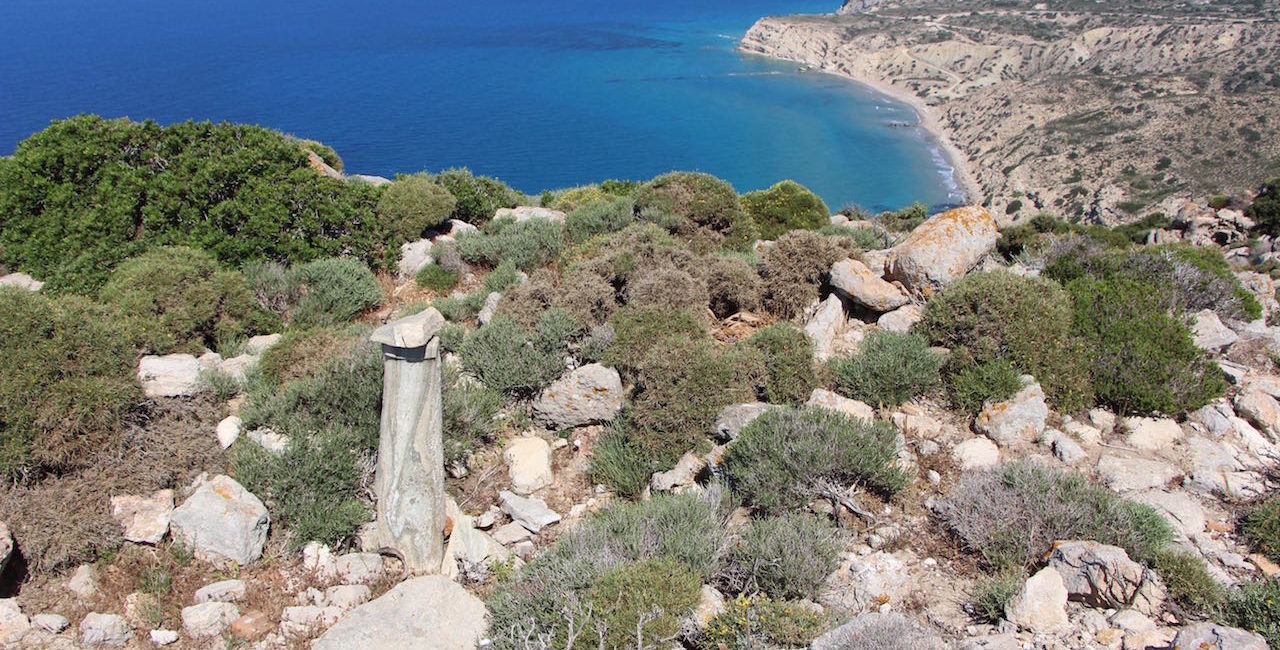Byzantine and Medieval Kos
Byzantine and Medieval Kos spans from the 4th century AD to the 16th century AD. It covers all the Byzantine and Christian period, followed by the Medieval or Hospitaller period of the Knights of Saint John.
The Byzantine period (4th century AD – end of 13th century AD)
Christianity propagated in Kos before the middle of the 3th century, while the New Testament relates the passing of Apostle Paul from Kos on his way back to Jerusalem after his third journey in 57 AD. As christianity prevailed, pagan buildings were converted into churches, ancient temples spoiled and sculptures destroyed.
Administratively, Kos remained a member of the Province of the Islands (Provincia Insularum), formed at the time of Emperor Diocletian. Ecclesiasticaly, the Diocese of Kos was under the Metropolis of Rhodes in the Province of Cyclade Islands and became an Archdiocese only in the beginning of the 14th century AD.
With the 469 AD earthquake, the early Christian construction period began. In 554 AD, an earthquake of enormous magnitude struck Kos and all early Christian basilicas, public and private buildings, as well as the Asklepieion collapsed.
During the 5th-6th century AD, Kos suffered numerous barbarian incursions (Vandals, Isaurians, Bulgarian, Slavs, Persians etc.), followed by Arabian raids in the 7th century AD. It is then that the decentralised political-military system of Themes is established, establishing a more effective defense of the Byzantine Empire, but also benefiting great landowners and monasteries. It is around 1080, Saint Christodoulos and Koan monk Arsenios Skinouris established the monastery of the Theotokos (later known as St Mary Kastrianon) in Old Pyli.
After the defeat of the Byzantines at Manzikert in 1071, Turks and Turkomans began to settle into Asia Minor and started raiding Kos and the Aegean. Concurrently, Franks pretexting the Crusades, as well as Venetians and Genoese started making their presence felt in the region. With the sack of Constantinople by the Crusaders in 1204, the Latin emperor Baldwin of Flanders became Lord of Kos. After a very tumultuous period, Kos fell eventually to the Venetians in 1284 and became a protectorate of Venice in 1302. Kos was later awarded to Genoese adventurers who helped the Knights of Saint John gain control of Rhodes and the surrounding islands in 1309.
Christian Basilicas and Byzantine monuments
From the Byzantine period, Kos has noteworthy early Christian basilicas, dating from the 5th-6th century AD, that you should definitely visit, notably the two tripartite Basilicas of Agios Stefanos and the Aghios Ioannis Basilica in Mastichari.
Other early Christian basilicas that are also of interest include those that are in the archaeological sites of Kos Town, the Aghios Ioannis Prodromos Baptistry (Epta Vimata) on the southern fringe of Kos town, the Saint Gabriel Basilica toward Psalidi, the Saint Pavlos and the Kapama Basilicas in Zipari, and the Kamari Basilica in the region of Kefalos.
There are other early Christian basilicas that you can visit in Kos, and 8 of them still haven’t been excavated. The size, as well as the architectural and decorative richness of the numerous basilicas in Kos bear witness to the fact that the island was one of the most important early Christian centres.
Other interesting monuments you can visit from the Byzantine period are the chapel of Agia Meliou, SW of the Asclepieion, the chapel of Agios Ioannis o Hostos close to Zipari, the chapel Zoodohos Pigi close to Haihoutes, the Agios Ioannis Theologos chapel in Lagoudi, the church Panayia Kouvoukliani in Zia and the chapel of the Transfiguration of Christ on the peak of Mount Dikaios. There also some interesting byzantine churches to visit in some castles, such as Saint Mary Kastrianon in the Old Pyli seettlement, and the Aghios Nikolaos and Aghia Paraskevi churches in the Antimacheia castle.
Abundant early Christian fragments from the basilicas of Kos are kept in the Architectonic Museum of Kos inside the Kos Fortress but is unfortunately not open to the public. A collection of Byzantine and post-Byzantine are displayed in the Diocesan Chapel of Evangelismos in Kos Town.
The Medieval (Knights Hospitaller) period (1314-1522)
The Order of Saint John the Baptist was founded in the 6th century AD and the word Hospitalii (the Nurses) was added to their title when the monks started attending the sick and the poor in the Holy Land. After the conquest of Jerusalem during the First Crusade (1099), the Order was transformed into an Order of monk-knights with military responsibilities and played a significant role in the wars of the Kingdom of Jerusalem, gaining fame, political influence and economic power.
When the last Christian castle fell in 1291, the Knights of St. John were forced to find temporary refuge in Cyprus. Concluding a pact in 1306 with the Genoese pirate Vignoli , the Knights conquered Rhodes in 1309 and eventually Kos in 1314, taking the title Knights of Rhodes.
The Knights granted certain autonomy to the inhabitants of Kos, as well as the right of communal administration and private property. They cut religious ties with the Ecumenical Patriarchate and brought the Church under the jurisdiction of the Roman Catholic Church and the Pope, establishing “Frankish episcopates”.
During the 14th century, the Knights took successful offensive action against the Turks on the Asia Minor coastline. At the end of the 14th century, the Knights undertook major military works on the island, whilst Kalymnos and Leros were added to the jurisdiction of Kos in 1386 and Nisyros in 1433. During this period, the Knights defended Kos with success against the Turks and the Egyptians.
After the fall of Constantinople in 1453 and the collapse of the Byzantine Empire, the Knights faced increasing aggressivity from the Ottomans, who conducted systematic piratical forays and large operations during the summer months. One such operation was the siege of Kos in the summer of 1457, by a Turkish army of 16.000, which was documented in detail by the then ruler of Rhodes and which ended with the successful resistance of the Knights at the Castle of Antimachia, but also with the destruction and desolation of the Koan countryside. The Turkish attacks against Kos continued until 1480 and the signing of a peace treaty that gave a 10-year respite to hostilities. The piratical activities of the Turks started again at the end of the 15th century and continued with greater intensity during the beginning of the 16th century.
In the meantime, in Kos, the devastating earthquake of 1493 destroyed most of the houses and knocked down many parts of the fortresses of Nerantzia, Palaio Pyli, Antimachia and Kefalos.
Sultan Suleiman I the Magnificent, in his quest to control the route towards Alexandria and Mecca, gave utmost priority to the conquest of Rhodes and the surrounding islands.In June of 1522, an army of 200.000 disembarked in Rhodes which brought the capitulation of the Knights on December of 1522. Houses and churches were vandalised and the Knights abandoned Rhodes and went to Crete. Kos was seized shortly after, in January 1523.
Monuments of the Hospitaller period
Kos has impressive landmark monuments dating from the Hospitaller period, that you should definitely visit, especially the fortresses of Kos Town, Antimachia and Pyli with its abandoned settlement. Other interesting monuments to visit are the fortified walls of Kos Town and the ruined castles of Kefalos, Kastelli and Vriokastro on the west part of the island.














